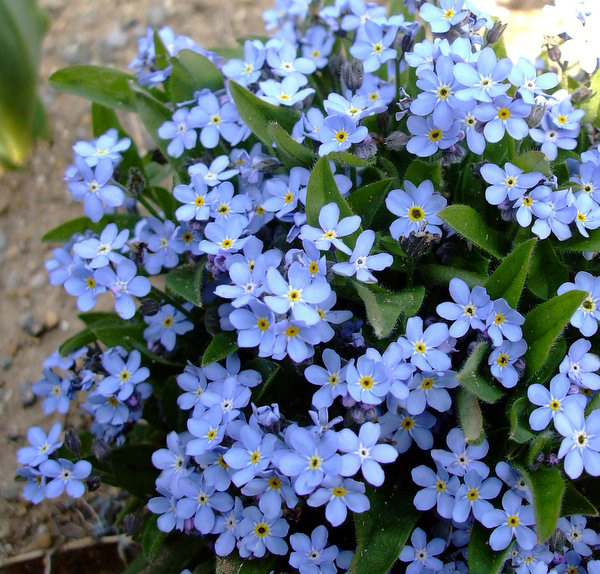
The name of the Forget-me-not flower is well-known for its origin. It stems from a tale of tragic love passed down from ancient times in Germany. The story revolves around a knight named Rudolf and his lover Berta, who, by the banks of the Danube River, discover a small flower. Rudolf attempts to pick the flower for Berta, but he slips and is swept away by the river’s strong currents. Determined, he tells her, “Vergiss-mein-nicht!” (“Forget me not!”) before succumbing to the water and drowning. Left behind, Berta places the flower on Rudolf’s grave, naming it after his final words. This tale of tragic love spread worldwide, and the flower’s name, “Vergiss-mein-nicht,” was translated into various languages. In Japan, in 1905 (Meiji 38), the botanist Takiya Kawakami named it “Wasurenagusa” (勿忘草) as the meaning of “勿 (must not) 忘 (forget) 草 (grass)”. The English name is also literally forget-me-not, and it has become an unforgettable word even in high school English.
ワスレナグサの花の名前の由来はよく知られています。ドイツに古くから伝わる悲恋の物語が由来です。騎士ルドルフと恋人ベルタがドナウ川のほとりでちいさな花を見つけ、ルドルフはベルタのためにその花を摘もうとします。しかしうっかりと足を滑らせ、川の急流に流されてしまいます。意を決した彼は彼女に”Vergiss-mein-nicht!“(僕のことを忘れないで!)と告げると、そのまま溺れて亡くなってしまいます。残されたベルタはルドルフの墓にその花を供え、彼の最期の言葉を花の名にしたとされています。この悲恋物語は世界に広まり、花の名前”Vergiss-mein-nicht”は各国語に翻訳されました。日本では、1905年(明治38年)に植物学者の川上瀧彌によって、「勿(してはいけない)忘(忘れる)草」の意として、初めて「勿忘草」(忘れな草)と名付けられました。英名もその直訳のforget-me-notで、高校英語でも忘れられない単語になりました。
